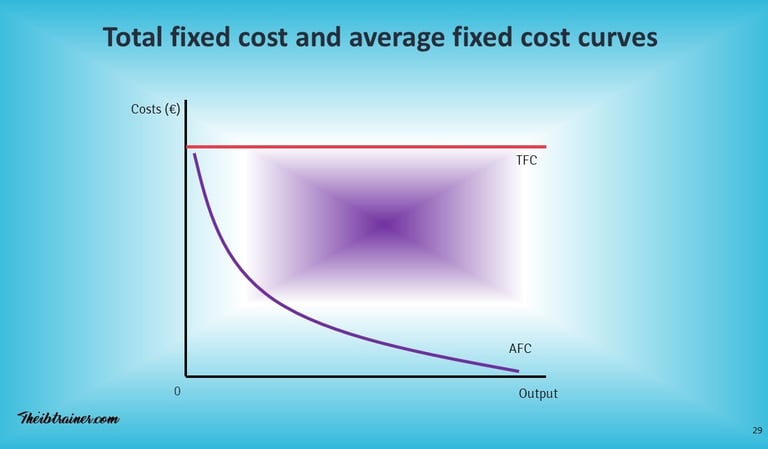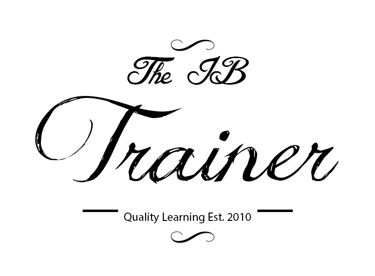The Hidden World of Business Costs and Revenues
IB Business Management, explore fixed costs, variable costs, and revenue streams through real companies. Netflix vs Disney battles and UK business stories.
IB BUSINESS MANAGEMENTIB BUSINESS MANAGEMENT MODULE 3 FINANCE AND ACCOUNTS
Lawrence Robert
11/19/202511 min read


Is Your Favourite Café Charging You Separately for Oat Milk? The Hidden World of Business Costs and Revenues
So You walk daily into your local coffee shop - the one you've been going to since Year 11 - and suddenly there's a separate 50p charge for oat milk. Again. The price of your usual order has crept up from £3.20 to £4.50 in less than two years. You're properly annoyed, naturally. But it will only take you a minute to realise that the café owner isn't cackling behind the counter counting their piles of cash. They're probably crying into their own oat milk latte, wondering how they're going to keep the lights on.
Welcome to 2024-2025 in the UK, where businesses are getting absolutely battered by rising costs. And I mean properly battered - like worse than Manchester United in the last 5 years kind of battered.
The Cost Crisis That's Hitting Every Business
Let's talk about what's actually happening out there in the real world. UK businesses are currently facing what can only be described as a financial nightmare. Energy bills for small businesses have shot up to around £13,264 annually by April 2025 - that's nearly double what they were paying before 2021. And that's just electricity. We haven't even mentioned the other stuff yet.
The UK government whacked up employer National Insurance contributions from 13.8% to 15% in April 2025, whilst also dropping the threshold from £9,100 to £5,000. Translation? It now costs businesses significantly more to employ people. Add in the National Living Wage jumping to £12.21 per hour, and suddenly that friendly barista serving you overpriced coffee is costing the business a lot more than they used to.
The message for IB Business Management students: not all these costs work the same way. Some go up and down depending on how busy the café is. Others? They're there whether the café serves one customer or a thousand. Understanding the difference is absolutely vital - not just for your IB exams, but for grasping why the world around you works the way it does.
Fixed Costs: The Bills That Arrive Every Single Month
Fixed costs are the costs of production that don't change with the level of output. Think of them as the subscription services of the business world - they're coming out of your account every month whether you like it or not, whether you use them or not.
For our struggling coffee shop, fixed costs include:
Rent on the commercial property (and if they're in central London, we're talking serious money)
Business rates (which increased by 9% in April 2024, cheers for that)
Equipment leasing costs for that fancy espresso machine
Salaries for the manager (note: salaries, not wages - we'll get to that difference)
Insurance premiums
Even if the café has zero customers on a rainy Tuesday morning, these costs are still there. Every. Single. One. The landlord doesn't care if you sold three coffees or three hundred - they want their £3,000 rent on the first of the month, mate.
Let me show you what this looks like on a graph:
See that horizontal line for Total Fixed Costs (TFC)? That's the thing about fixed costs - they're constant regardless of output. Whether you're producing 10 units or 10,000 units, that line stays flat. But notice the Average Fixed Cost (AFC) curve? As you produce more, your fixed costs get spread over more units, so the AFC per unit goes down. This is why businesses are obsessed with increasing sales - it helps them spread those unavoidable fixed costs over more products.
Important IB Business Management Point: It's incorrect to assume fixed costs never change. They can absolutely change over time - but the key thing is that they don't change because of the level of output. Your marketing costs might go up, but not because you sold more products. Your insurance might increase, but not because you had more customers. The change happens for other reasons entirely.
Variable Costs: The Ones That Actually Change With The Business
Now let's talk about variable costs - these are the costs of production that change according to the level of output. The more you produce, the more these costs increase.
Back to our café:
Coffee beans - more customers = more beans needed
Milk (including that expensive oat milk everyone bangs on about)
Paper cups, lids, sleeves - every drink sold needs these
Hourly wages for the baristas (not salaries - wages that vary with hours worked)
Electricity for actually making the drinks (though there's a base level of electricity that's fixed)
If the café is closed on Christmas Day, their variable costs? Zero. Zilch. Nada. No customers means no coffee beans used, no milk poured, no hourly wages paid to staff who aren't there.
See how that Total Variable Costs (TVC) line starts at zero and slopes upward? That's because when output is zero, variable costs are zero. As production increases, so do these costs. Pretty straightforward, right?
But here's something that'll impress your IB Business Management examiner: what counts as a variable cost for one business might not be for another. Take Finning International, the world's largest Caterpillar equipment distributor - 54% of their revenue comes from servicing equipment, while only 36% comes from selling new equipment. For them, fuel is a variable cost. For a cinema showing the latest Marvel film? Fuel costs barely register - they're not driving anywhere.
The Total Costs Formula:
TC = TFC + TVC
Total Costs equals Total Fixed Costs plus Total Variable Costs. This is absolutely essential for understanding business finance. Tattoo it on your brain. Or just, you know, write it in your notes.
Direct Costs vs Indirect Costs
Right, let's make this even more interesting with direct costs and indirect costs (also called overheads!).
Direct costs are costs that can be clearly and specifically identified with the output of a certain product or project. I call this the "can you point at it?" test. Can you point at your product and trace a specific cost directly to it? Then it's a direct cost.
For a taxi driver:
Petrol for trips = Direct cost (you can literally point to each journey)
Car insurance = Direct cost (needed specifically for providing the taxi service)
The cost of the actual taxi = Direct cost
Indirect costs (overheads) are recurring costs that cannot be clearly identified with the production or sale of a particular good or service. These are the costs that keep the whole business running but you can't link them to one specific product.
Examples include:
Office rent (if you have multiple product lines, how much rent is for Product A vs Product B?)
Accounting fees
Electricity bills
Legal fees
Administrative staff salaries
That annual subscription to Microsoft Office nobody remembers authorising
IB Business Management Higher Level Note: Direct costs can be allocated to a particular cost or profit centre. Indirect costs cannot be easily or objectively allocated. This matters when you're trying to work out which department or product is actually making money.
Revenue Streams: Or, How Netflix and Disney Are Playing Completely Different Games
Now let's talk about revenue. But first, let's clear something up because even my best students get this wrong:
Revenue ≠ Profit
Say it louder for the people at the back. Revenue is just the money coming in. Profit is what's left after you've paid for everything. Big difference.
Total Revenue Formula:
TR = P × Q
Total Revenue equals Price times Quantity sold. If a cinema sells 1,200 tickets at £11 each, their total revenue is £13,200. Easy. But that doesn't mean they made £13,200 profit - they've still got to pay for staff, electricity, the film rights, that bloke who cleans up the spilled popcorn... you get the idea.
The Revenue Streams Game: Why Smart Businesses Don't Put All Their Eggs in One Basket
Let's talk about revenue streams - the various sources of income a business has. Some companies are brilliant at this. Others? Not so much.
IB Business Management Real-life Examples of Revenue Streams from Real Companies (2024/2025)
Look at how different these businesses are:
Amazon's Strategy: Everything, Everywhere, All at Once Amazon generated $638 billion in revenue in 2024 - more than any other tech company. Online shopping (their original business) is only 39% of their revenue now. AWS (their cloud computing service that most people have never even heard of) generates half of Amazon's entire profit. They've also got physical shops, they sell advertising, and Prime Video is competing with Netflix. They're basically six different businesses pretending to be one company.
Spotify: Free vs Paid Spotify's just posted its first-ever full year of profitability in 2024 after 18 years of operating at a loss. How? They've mastered the dual revenue model:
88% of their revenue comes from Premium subscriptions (€3.74 billion per quarter)
12% comes from ads on the free tier (€453 million per quarter)
They've also added podcasts (6.5 million titles), audiobooks, and video content. But unlike Netflix going all-in on streaming, Spotify keeps their free tier because those 380 million ad-supported users are still generating revenue and might eventually upgrade to Premium.
Tesla's Secret Weapon: Not Just Cars Anymore Everyone thinks Tesla = electric cars. Wrong. Their energy storage business is absolutely on top right now. In 2024:
Energy storage revenue jumped 67% to over $10 billion
Energy division profit margins hit 30% (higher than their car business!)
They deployed 31.4 gigawatt hours of battery storage (more than doubled from 2023)
Tesla's energy business now contributes 23% of their total profit whilst only being 12% of revenue. Translation? It's becoming more profitable than selling cars. They're selling massive Megapack batteries to power companies and Powerwall batteries for homes, plus solar panels and even vehicle insurance. Multiple revenue streams = staying alive when one business struggles.
The Netflix vs Disney Revenue Streams Battle Royale
And speaking of multiple revenue streams, let's talk about the streaming wars - because nobody illustrates this better than Netflix versus Disney.
Netflix's Game Plan: Netflix is basically all-in on streaming. They ended 2024 with around 302 million subscribers and stopped reporting quarterly subscriber numbers, preferring to focus on revenue and engagement. Their revenue streams are pretty focused:
Subscription fees (their main thing)
Advertising revenue (the newer, cheaper tier with ads - projected to hit $1.207 billion in 2025)
Gaming (they're testing this out)
Live events (they signed a 10-year, ~$5 billion deal for WWE Raw starting January 2025, plus NFL Christmas games)
Netflix is essentially betting everything on keeping you glued to your screen. They spent around $18 billion on content in 2024, with some films costing up to $232 million. That's insane money for a single film.
Disney's Completely Different Strategy: Disney, on the other hand, is playing 4D chess with their revenue streams:
Theme parks (which continue to print money despite everything)
Box office (Disney became the first studio post-pandemic to surpass $5 billion worldwide box office in 2024, with hits like Inside Out 2, Deadpool & Wolverine, and Moana 2)
Merchandise (every kid with a Spider-Man lunchbox? That's Disney getting paid)
Disney+ subscription fees
Hulu subscription fees
ESPN+ subscription fees
Advertising revenue (projected at $1.779 billion for 2025, actually higher than Netflix's ad revenue)
Licensing fees (when McDonald's puts Marvel characters in Happy Meals, Disney gets a cut)
Disney's combined subscriber base across Disney+, Hulu, and ESPN+ hit approximately 183 million by mid-2025, and their direct-to-consumer business finally turned profitable, guiding to $1.3 billion in fiscal 2025.
Why Is All This Relevant?
When Netflix has a bad quarter with their streaming service, they're in trouble because that's basically their whole business. When Disney has a dodgy quarter with Disney+? They've still got the theme parks, the box office, the merchandise sales, and about fifteen other revenue streams keeping them afloat.
When Tesla's car sales struggle (as they did in 2024/2025), their energy storage business picks up the slack with 30%+ profit margins.
When Amazon's retail margins get squeezed, AWS is there generating massive profits to keep the whole company healthy.
It's like the difference between having all your IB subjects riding on one final exam versus having coursework, practice assessed, and multiple papers. Diversification = safety.
So, Why Is Your Coffee So Expensive?
Let's circle back to that café charging 50p for oat milk. Now you understand what's happening:
Their fixed costs have shot up (energy bills nearly doubled, business rates up 9%), their variable costs have increased (milk prices, coffee beans, staff wages with the new National Living Wage), and they're trying to maintain their total revenue without losing all their customers.
The formula at work:
Total Costs = Fixed Costs (rent, rates, insurance, salaries) + Variable Costs (beans, milk, hourly wages, cups)
Total Revenue = Price per coffee × Number of coffees sold
Profit = Total Revenue - Total Costs
If Total Costs are going up but they don't increase prices, their profit disappears. If profit disappears long enough, the café closes. Then where will you get your overpriced oat milk latte before your elite 9am IB Business Management lesson?
What To Take With You
When you're in your IB Business Management exam and you get a question about costs and revenues, here's what they want to see:
Define your terms clearly (what exactly is a fixed cost? Variable cost?)
Use the formulas (TC = TFC + TVC, TR = P × Q)
Apply to real businesses (like how Disney's diverse revenue streams protect them, or how UK SMEs are struggling with rising fixed costs)
Show you understand context (what's a variable cost for a taxi firm might not be for a cinema)
Link costs to decision-making (how rising costs force businesses to raise prices, cut services, or risk closure)
What This Means For You (Beyond Just Passing Your IB)
Understanding costs and revenues isn't just about getting good marks. It's about understanding why:
More than half of UK small businesses expect to raise prices in 2025
Your favourite local shops are struggling while massive chains seem fine
Netflix is desperately trying to stop password sharing (every shared account is lost revenue, mate)
Disney keeps making sequels and prequels (established IP = multiple revenue streams with lower risk)
Late payments cost UK SMEs an average of £22,000 a year in delayed working capital
That independent bubble tea place closed but Starbucks is still there (economies of scale spreading fixed costs)
You're living through one of the toughest periods for UK businesses in decades. Business investment is expected to grow only 0.9% in 2025, down from projections of 1.4%, and up to 50,000 firms face potential closure primarily due to soaring overhead costs.
When you understand costs and revenues, you understand why businesses make the decisions they do. You understand why your local café charges for oat milk, why Netflix is betting billions on live sports, and why Disney isn't worried about one streaming service when they've got theme parks full of people spending £100+ per person.
Today's Message
Business costs and revenues aren't just boring theory for your IB Business Management exam. They're the fundamental forces shaping every business decision around you. From the massive streaming wars between tech giants to your local coffee shop trying to survive in a brutal economy, it all comes down to managing costs and generating revenue.
And next time that café charges you 50p extra for oat milk? Maybe give them a break. They're just trying to keep their Total Costs below their Total Revenue so they can stay open long enough to serve you tomorrow.
Now go forth and spot costs and revenue streams everywhere. Trust me, once you start seeing them i's addictive, you can't stop. You'll be analysing Greggs' business model whilst eating your sausage roll. You've been warned!
Key Takeaways:
Fixed costs don't change with output (but can change over time for other reasons)
Variable costs increase as production increases
TC = TFC + TVC (tattoo this on your brain)
TR = P × Q (ditto)
Revenue ≠ Profit (never confuse these)
Multiple revenue streams = safer business model (the Disney effect)
Context matters - costs that are variable for one business might not be for another
UK businesses in 2024-2025 are facing unprecedented cost pressures
Understanding costs and revenues helps you understand the real world, not just pass exams
Stay well,




IB Complete Support Courses, a new generation of affordable support materials directed at IB students seeking grades 6 or 7.
© Theibtrainer.com 2012-2025. All rights reserved.
